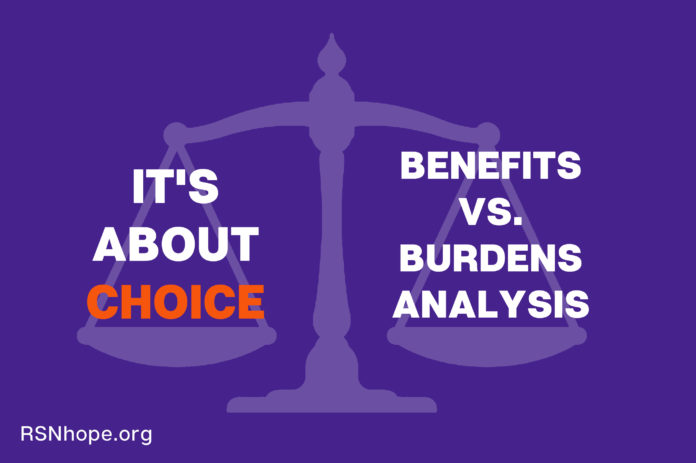“If I couldn’t see my life improving on dialysis, I wouldn’t want to live.”
Many patients make similar statements to show how they feel or how they think when faced with the burdens of dialysis. If they are suffering losses in physical or mental function, they might see their quality of life falling to a level lower than what they could accept. They might choose to simply stop dialysis.
An Uncertain Choice
As a renal care professional, I often imagine living the life of a dialysis patient, and, when I see myself facing the burdens that these patients do, I often question my own strengths.
In the past, I have vehemently stated that I would discontinue dialysis and accept the consequences. But with age comes uncertainty. Can I stand before you as a healthy person and realistically state what I would choose for myself in light of severe illness?
Rating Quality of Life
Recently, several healthcare professionals found themselves facing the same decisions that their patients do. They participated in quality of life studies that surveyed two groups:
(1) Healthcare professionals; and
(2) People diagnosed with potentially debilitating diseases such as multiple sclerosis and Parkinson’s disease.
Physical and mental limitations were listed, and those surveyed were asked to rate quality of life with these limitations. Researchers concluded that, consistently, doctors and nurses rated the quality of life significantly lower than patients suffering from these limitations or diseases that could cause the limitations. This led researchers to ask: “What influence does the attitude of the healthcare worker have on discussions with patients about care options?” This is an important question for healthcare professionals to consider. What methods do you use to discuss options with your patients?
Benefit vs. Burdens
One way of sorting out ethical questions is to use a “benefit versus burdens” analysis. Chances are you have been doing this all your life but may not have labeled it as such. A choice is analyzed according to the positive aspects or outcomes as opposed to the negative ones.
Let’s look at hemodialysis. The benefit is maintaining life by dialysis treatments, diet and medications, to mimic the natural function of the kidney.
The burdens are also considerable. One must arrange a schedule for dialysis plus transportation to and from treatments. One must maintain a vascular access that puts the patient at risk of infection and has the added burden of pain of needle insertion, declotting, or revision as well. One must alter one’s diet, take many medications on a regular basis, and usually limit fluids.
There are added inconveniences such as filing insurance forms for reimbursement. However, after a benefits versus burdens analysis, most young, middle aged and a little older than middle-aged patients usually choose to accept hemodialysis, peritoneal dialysis, or a transplant. In contrast, United States Renal Data System statistics have shown that an increasing number of senior patients decide that the burdens outweigh the benefits and choose to discontinue dialysis after a trial period.
These are personal decisions, and each person and family ought to be able to decide what they want based on their particular analysis of the situation.
“What Makes You Happy?”
Analyzing the benefits and burdens may not be enough. Sometimes, there may be additional questions that need to be answered. You can help a patient by asking questions such as: “What makes you happy? What do you look forward to, or what pleases your senses? Is it food, music, seeing grandchildren, a massage, pedicure, or manicure? What about sexuality?”
Several years ago, I dialyzed a 60-some year old reverend who was diabetic and was admitted for a penile implant. He decided with his wife after a benefits versus burdens analysis that the burdens of the operation were tolerable to achieve the benefits.
If the answer to, “What makes you happy or what pleases you?” is, “Nothing,” further discussion is needed. Some leading questions I ask are: “How do you think you are doing?” or “When would all of this just get to be too much?” Then I listen.
Additional Questions
Patients might have more questions. Some patients will ask: “What would happen if I didn’t come to dialysis?” A brief answer is sometimes appropriate followed by discussion when the patient is off the machine. A good idea would be to include family in this discussion.
Questions to assess depression can help identify situations in which antidepressants may improve the quality of life and outlook. Again, after a benefits verses burdens analysis, the patient may decide the burdens of continuing treatment outweigh the benefits.
Reassessing What the Patient Wants
It is very important at times of loss to reassess the wishes of the patient. For example, you might say: “When we last spoke six months ago during your check-up, you said that you would want to have a breathing tube and be on a breathing machine if you were having trouble breathing. You also said that you would want us to press on your chest to help your heart, if needed. During the past six months, you have had an amputation of your leg and lost some vision in one eye. I want to check with you each time we meet for check-ups to be sure I clearly understand what you want now and will share that with other members of your care team. What are your wishes today?”
The goal is to find out what the patient’s needs are and to address them candidly.
For More Information
There are some excellent pamphlets available to help further the discussion. The Renal Physicians Association (RPA) and the American Society of Nephrology (ASN) in collaboration with the American Nephrology Nurses’ Association (ANNA) and other groups produced an excellent 80-page booklet titled Guidelines for the Initiation and Withdrawal of Dialysis.
This booklet, which is available through the RPA [log onto: www.renalmd.org, gives background information and a thorough discussion of the subject. It is a valuable tool to use when analyzing options with patients.
About the Author:
Kathryn “Kitty” Richardson, RN, BSN, CNN, has 43 years nursing experience and 34 years of experience in nephrology nursing in acute, hospital-based hemodialysis. She is a nephrology/hemodialysis Nurse at INOVA Fairfax Hospital in Falls Church, VA. This article was originally posted on iKidney.com in August 2002.
Web ID 319







